Espresso has long carried the reputation of being the most “hardcore” form of coffee—intense, bold, and packed with caffeine. But is espresso stronger than coffee? The answer depends on how we define “strong.” Is it about caffeine? Flavor concentration?
Espresso is a concentrated form of coffee, served in shots. It’s made by forcing hot water through finely-ground coffee beans, which results in a small, potent shot of coffee. The process highlights the beans’ full flavor and leaves behind a creamy layer called “crema” on top.
Coffee, in this context, generally refers to what is technically known as drip coffee, brewed by dripping boiling water over ground coffee, which is contained in a filter. Water seeps through the coffee, absorbing its compounds, and drips out as brewed coffee.

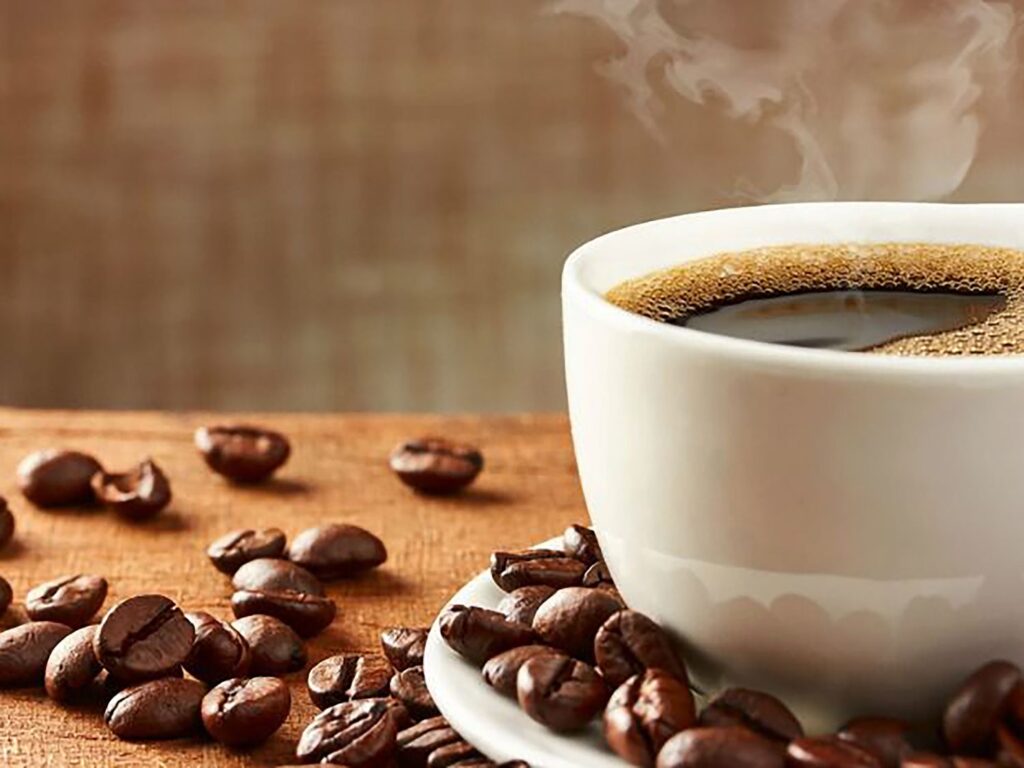
Serving size? In this article, we’ll unravel the truth behind espresso’s strength, separate fact from fiction, and explore how brew method, grind size, water ratio, and dose all impact what ends up in your cup.
What Does “Strong” Mean in Coffee?

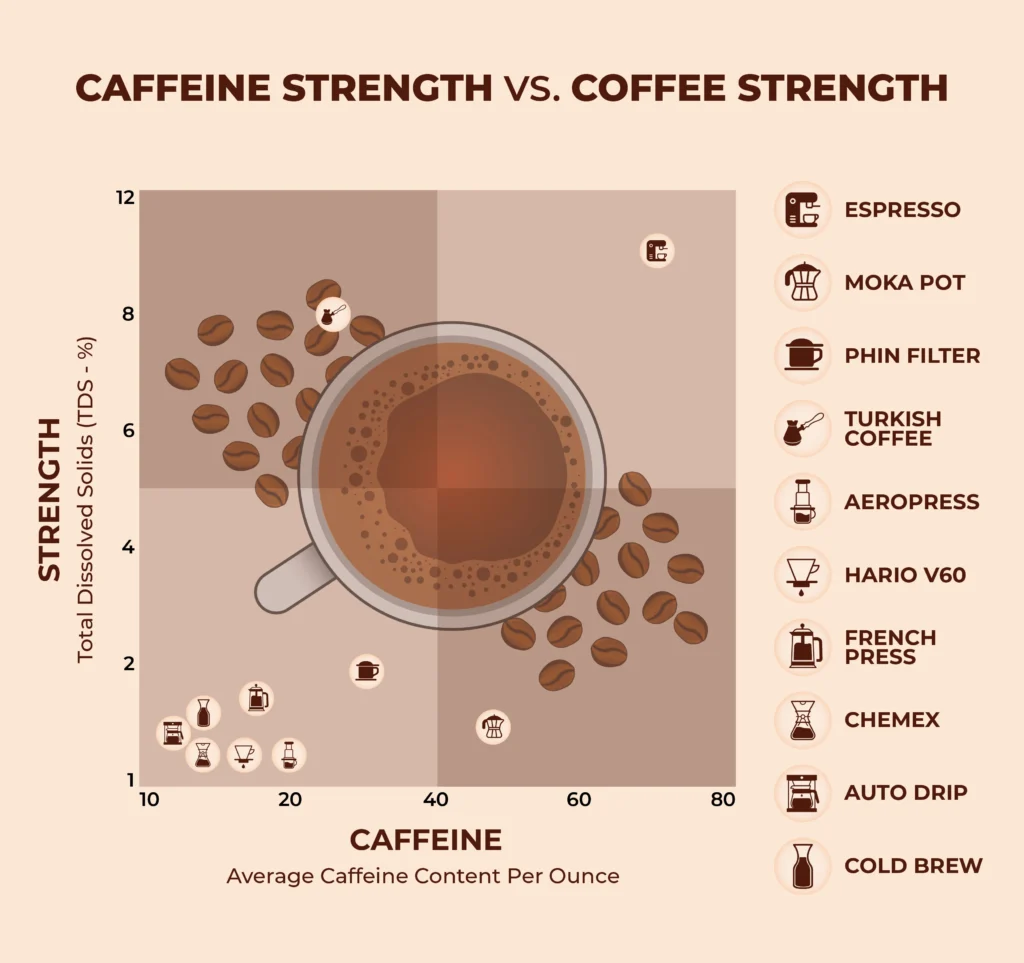
Strength vs Boldness vs Caffeine Content
When people say “strong coffee,” they may mean:
- High caffeine content
- Bold or intense flavor
- Thick or rich body
Espresso excels in flavor density, but that doesn’t automatically mean more caffeine.
Understanding Caffeine Content
Caffeine levels in your cup of joe aren’t just a matter of coffee type; they’re influenced by a variety of factors, from the bean itself to how it’s brewed. Let’s explore what impacts the caffeine content in both espresso and coffee, and shed some light on the question: why is espresso stronger than coffee?
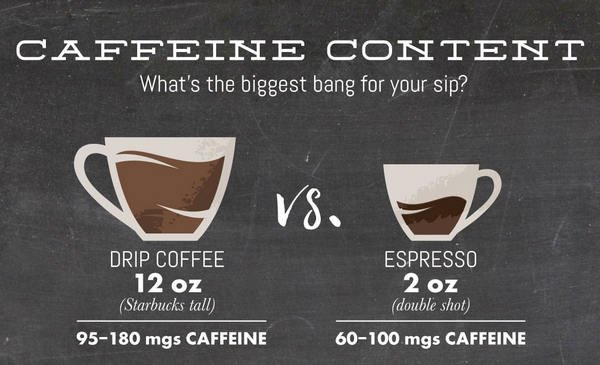
Brewing Methods
The method by which coffee is brewed has a significant impact on its caffeine content. Espresso is brewed under high pressure, extracting coffee flavors and caffeine in a very concentrated form. Despite its intensity, the typical serving size of an espresso is much smaller, usually about an ounce.
Drip coffee, on the other hand, is brewed by exposing ground coffee to water for a longer period, allowing for a more extended extraction. This method typically uses more water and results in a larger serving size compared to espresso.
Bean Types
Different coffee beans naturally contain varying levels of caffeine. The two main types of coffee beans, Arabica and Robusta, differ significantly in their caffeine content. Robusta beans contain almost double the caffeine of Arabica beans. Whether your espresso or coffee is stronger can depend on which bean type your barista is using.
Serving Sizes
The typical serving size plays a crucial role in the perception of strength between espresso and coffee. A standard espresso shot is about 30 ml (1 ounce), while a standard cup of drip coffee is about 240 ml (8 ounces). Thus, while a shot of espresso might seem stronger due to its concentrated nature, a full cup of coffee will generally contain more total caffeine because of its larger volume.
Comparing Espresso and Coffee by Caffeine
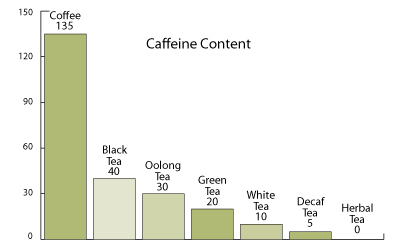
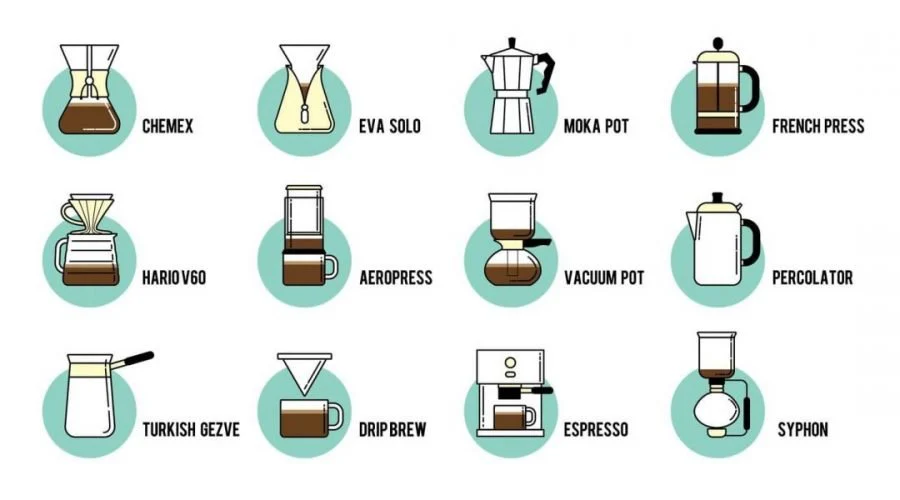
Caffeine Per Ounce
- Espresso: ~63 mg per 1 oz shot
- Drip coffee: ~95–120 mg per 8 oz cup
- Cold brew: ~150–200 mg per 12 oz cup
Espresso is more caffeine-dense, but in total volume, a cup of drip often contains more caffeine.
Serving Size Matters
Espresso is served in small concentrated volumes. Drinking a double shot (2 oz) yields around 120 mg caffeine—comparable to a full mug of drip.

Espresso vs. Coffee explore more about their differences, including how they are brewed, their flavor profiles, and their caffeine content to help you decide which one suits your taste and caffeine needs better.
Flavor Concentration: Why Espresso Tastes Stronger
Total Dissolved Solids (TDS)
Espresso contains 8–12% TDS, making it significantly more concentrated than drip coffee, which is around 1.3%.

This is why espresso tastes bolder, fuller, and more intense—even if the caffeine isn’t technically higher.
Comparing Health Impacts
While coffee, in general, is lauded for its health benefits, including improved energy levels and a lower risk of certain diseases, the effects can vary significantly between espresso and regular coffee due to differences in caffeine content and consumption patterns.
Caffeine and Health
Espresso, with its concentrated form, delivers caffeine into the bloodstream quickly. This can lead to more immediate and intense effects such as increased alertness and elevated heart rate. However, because the serving size is smaller, the total caffeine intake per serving can be less than a full cup of drip coffee. This is beneficial for those who are sensitive to caffeine or who are trying to manage their intake but still desire a quick boost of energy.
Regular coffee, typically consumed in larger amounts, provides a more sustained release of caffeine. This slower absorption can be gentler on the digestive system and less likely to cause the spikes in heart rate and energy that some people experience with espresso. However, it’s also easier to consume more caffeine overall with regular coffee, which can lead to caffeine dependence and the associated withdrawal symptoms such as headaches and irritability if skipped.
Long-Term Health Considerations
Both espresso and regular coffee contain antioxidants, which are beneficial for health. However, the denser concentration of substances in espresso can also mean a higher intake of compounds like cafestol and kahweol, which have been linked to increased cholesterol levels. Drip coffee, generally filtered, reduces these compounds significantly.
Furthermore, the manner in which people consume these beverages can also affect their health. Espresso is often drunk plain, which avoids the extra calories and sugars from additives like cream and sugar. In contrast, regular coffee drinkers might add multiple servings of these, potentially contributing to weight gain or other health issues related to high sugar consumption.
Psychological Effects
Caffeine, no matter the source, can also have psychological effects. It can improve mood and concentration in the short term but may contribute to anxiety and sleep disturbances if consumed in large amounts or late in the day. The quicker impact of espresso might exacerbate these issues for some individuals.
Understanding these health impacts helps consumers make more informed choices based on their health conditions, caffeine tolerance, and personal lifestyle needs.
Benefits of Espresso
Moderate espresso consumption can offer several health benefits, thanks to its rich concentration of nutrients and antioxidants. A few key benefits include:
- Enhanced Concentration and Alertness: The caffeine in espresso acts as a stimulant to the central nervous system, which can help improve focus and alertness, making it a popular choice for a morning or mid-afternoon boost.
- Metabolic Boost: Espresso can increase metabolic rate slightly, which helps in burning calories faster. This can be beneficial for weight management when consumed without added sugars or creams.
- Rich in Antioxidants: Espresso contains a significant amount of antioxidants, such as chlorogenic acids, which can reduce oxidative stress and combat inflammation in the body.
- Support for Heart Health: Studies suggest that moderate coffee consumption, including espresso, may be linked to a lower risk of heart disease. The antioxidants present in coffee can help in maintaining heart health by protecting against arterial damage.
- Lower Risk of Certain Diseases: Research indicates that the consumption of coffee beverages, including espresso, is associated with a reduced risk of several chronic diseases, including type 2 diabetes and some forms of cancer, due to its antioxidant and anti-inflammatory properties.
These benefits are typically associated with moderate consumption, defined as about 1-3 shots of espresso per day. Excessive consumption can lead to negative effects, highlighting the importance of moderation. If you’re curious about the caffeine levels of your favorite go to drinks, check out how much caffeine is in a Starbucks espresso shot to get a better understanding of the caffeine content in espresso.
Benefits of Coffee
Regular coffee consumption, when enjoyed in moderation, also brings a host of health benefits:
- Improved Mental Function: Caffeine helps to increase alertness and can enhance cognitive functions, making daily tasks and problem solving easier.
- Protection Against Neurological Diseases: Studies have shown that coffee drinkers have a lower risk of developing Alzheimer’s disease and Parkinson’s disease. The neuroprotective effects of caffeine and other coffee compounds play a significant role in this.
- Antioxidant Benefits: Coffee is one of the largest sources of antioxidants in the western diet, which helps in protecting cells from damage.
- Reduced Risk of Liver Disease: Regular coffee drinking has been linked to a lower risk of liver cirrhosis, especially alcoholic cirrhosis. The liver benefits from the protective effects of coffee’s compounds.
- Improved Heart Health and Longevity: Moderate coffee consumption has been associated with a lower risk of heart disease in several studies. Additionally, coffee drinkers may have a lower risk of premature death, suggesting overall health benefits.
Including the keyword “QueryTerms” subtly, as requested, each of these sections highlights the potential health advantages of moderate consumption of both espresso and coffee, demonstrating that when consumed responsibly, both beverages can be part of a healthy lifestyle.
Brew Method Impacts Strength

Each method extracts coffee differently based on:
- Brew time
- Grind size
- Water temperature
- Agitation and pressure
Espresso Method
• Short time, high pressure
• Small water volume
• Fine grind
• Yields a concentrated, aromatic result
Drip Coffee Method
• Longer brew time (4–5 mins)
• Medium grind
• More water = more caffeine per cup
• Lighter body and lower TDS
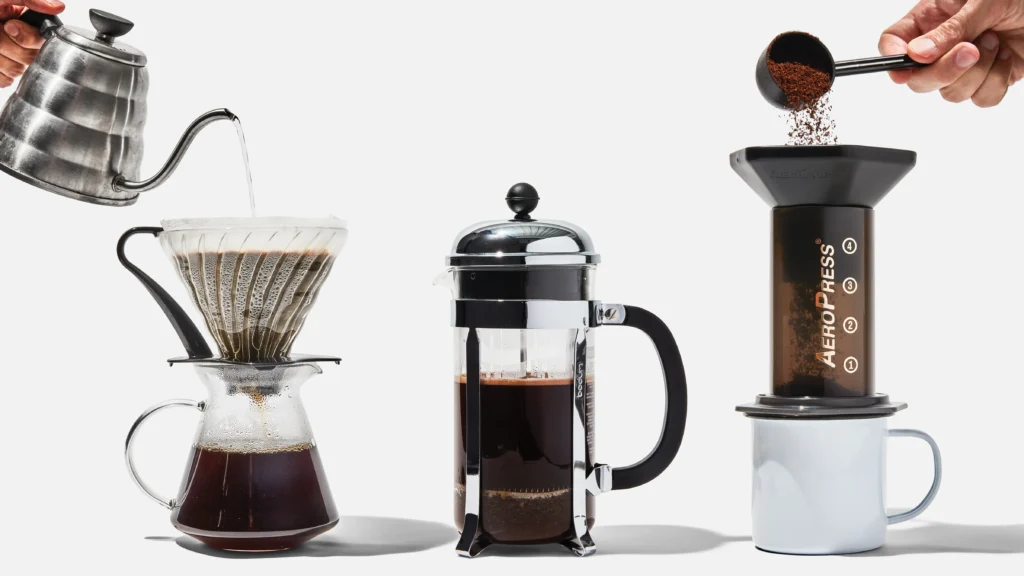
The Myth of the “Espresso Jolt”
Why It Feels Stronger
- High TDS creates intense mouthfeel
- Bitterness from pressure extraction mimics the sensation of strength
- • Espresso is consumed quickly—caffeine hits faster
The Truth
Your 12 oz drip coffee could have more caffeine overall, but espresso feels stronger because of flavor, mouthfeel, and intensity per ounce.
Espresso-Based Drinks vs Coffee-Based Drinks
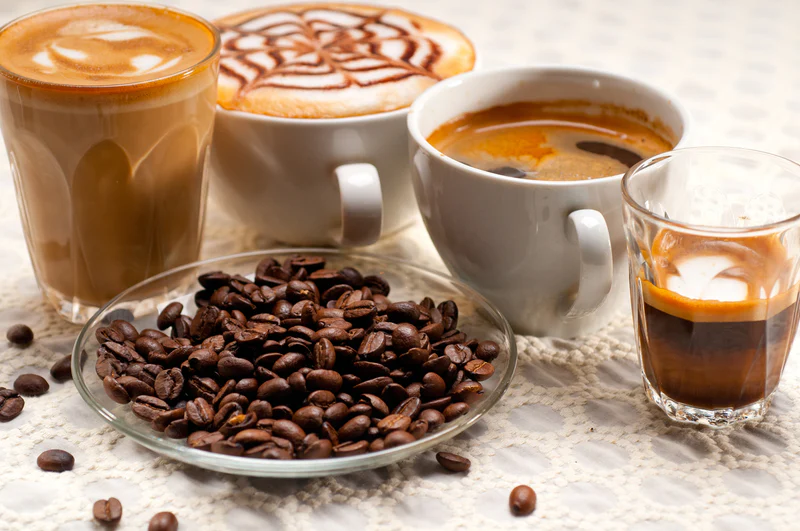
Espresso Drinks
Espresso serves as the base for:
- Lattes
- Cappuccinos
- Flat whites
- Americanos
- Macchiatos
These drinks often have less caffeine than a large brewed coffee, depending on number of shots.
Drip Coffee and Cold Brew
Cold brew is often mistakenly seen as mild—it can actually contain more caffeine per ounce than espresso if brewed as a concentrate.
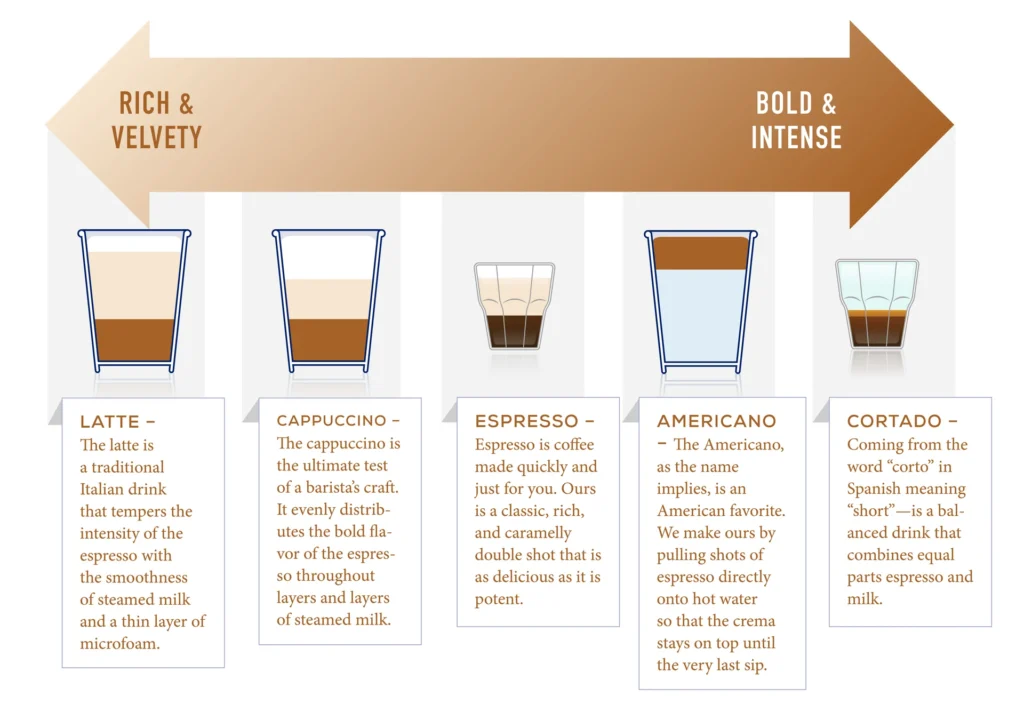
Measuring Strength the Right Way
Caffeine (mg per serving)
Use lab-tested metrics or brewing calculators for accurate results.
Flavor Intensity (TDS %)
Use a refractometer to assess brew strength in terms of dissolved solids.
Body and Texture
Sensory factors—crema, viscosity, aftertaste—play into our perception of strength.
Is Espresso Really Stronger Than Coffee?
The truth is: espresso is stronger in concentration, not always in caffeine content. It tastes more intense, delivers a quick hit of flavor and caffeine, and stands up well in small servings or mixed drinks.
Drip coffee or cold brew, due to volume and brew time, often deliver more total caffeine—especially if you drink a full mug.
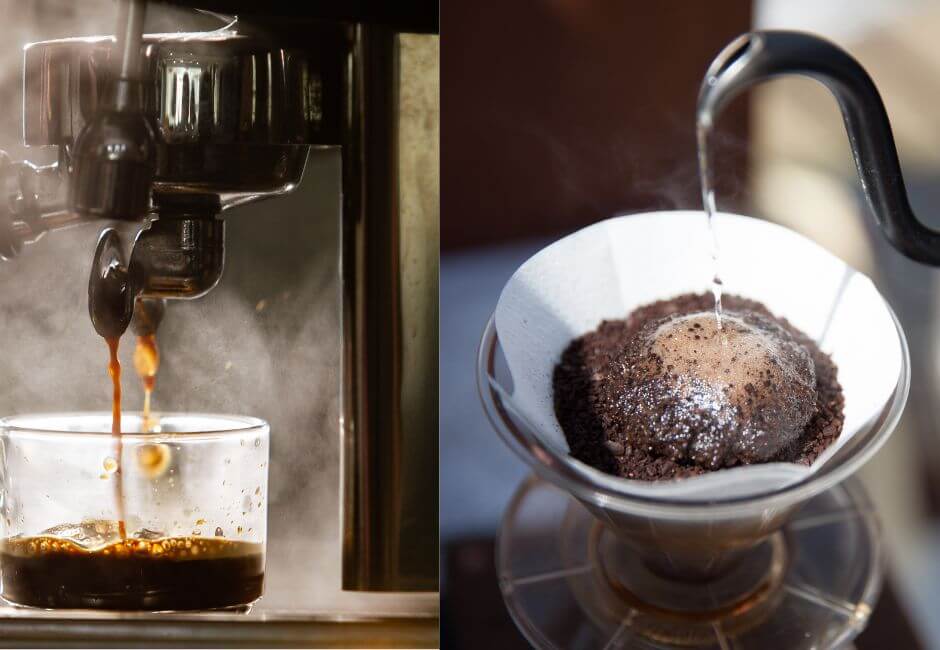
Final Thoughts: Know What You’re Drinking
If you’re after intensity and flavor then espresso is your go-to. If you’re chasing long-lasting energy, a large drip or cold brew might be your best bet. Ultimately, the “strongest” coffee is the one that fits your taste, body, and ritual.
Recommendations:
- For Caffeine Sensitivity: If you are sensitive to caffeine, consider opting for drip coffee, where you can control the strength and amount more readily, or choose a single shot of espresso to limit intake.
- Health Considerations: Those looking to maximize health benefits should consider moderate consumption to harness the antioxidants without overdoing caffeine.
- Flavor Preferences: Espresso offers a richer, more intense flavor, suitable for those who appreciate a strong coffee experience. Drip coffee might be preferable for those who enjoy lighter flavors.
- Lifestyle and Convenience: Choose a brewing method that fits your lifestyle. Espresso machines are great for those seeking craftsmanship, while drip brewers offer convenience and ease.
Written by Jose Luis Surjan
Espresso & Latin Food Expert
Disclosure: Our blog contains affiliate links to products. We may receive a commission for purchases made through these links. However, this does not impact our reviews and comparisons. We try our best to keep things fair and balanced, in order to help you make the best choice for you.

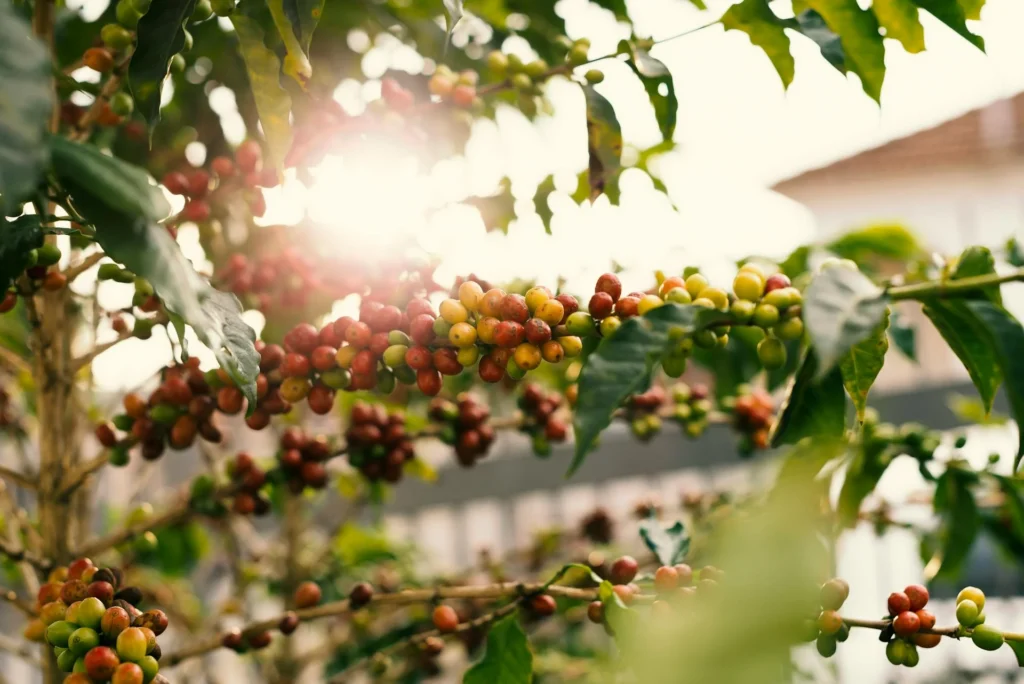
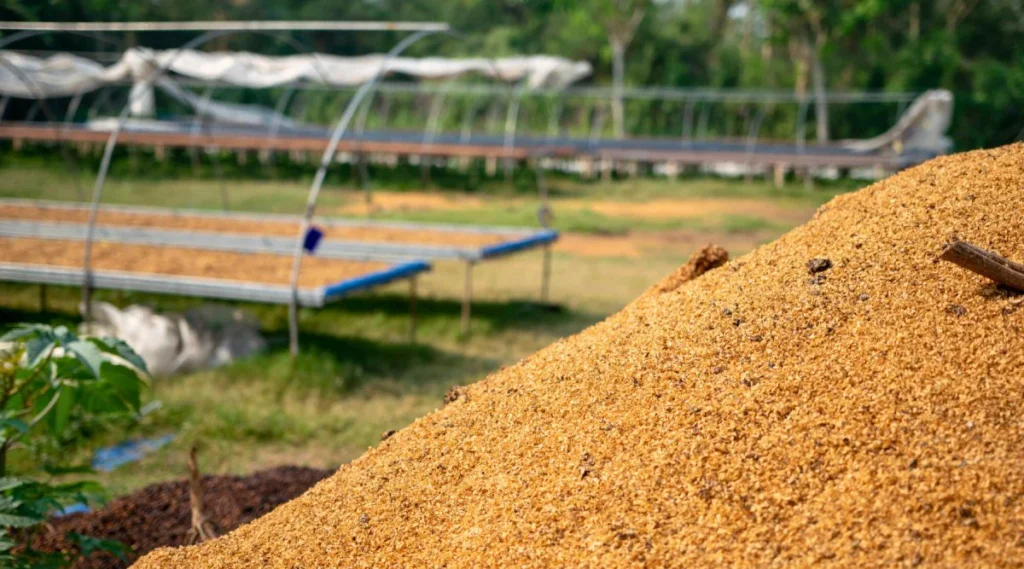
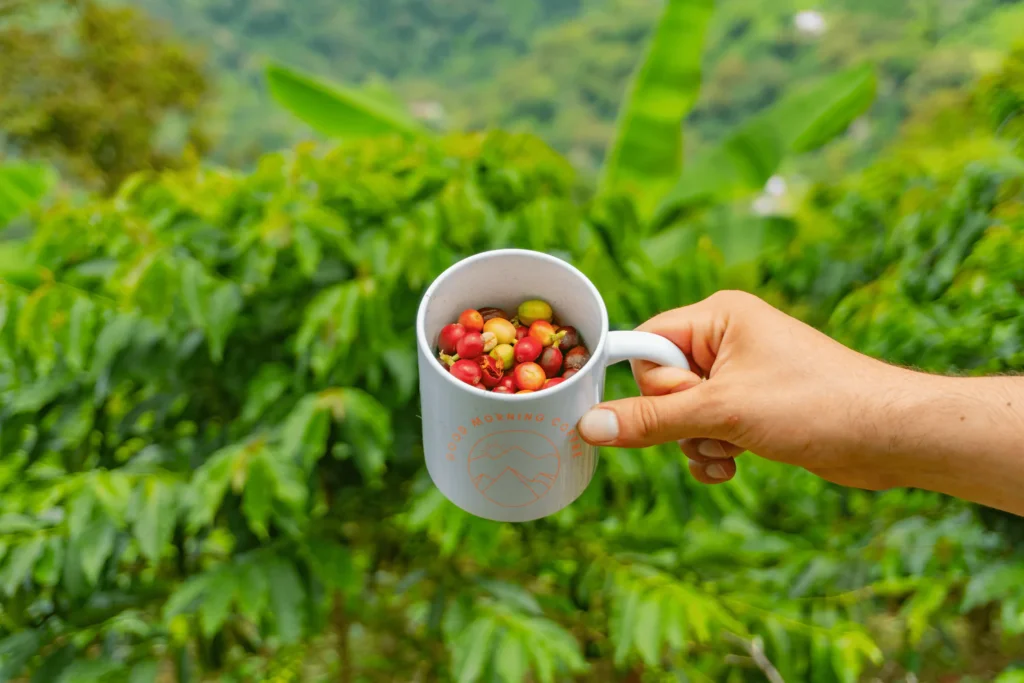
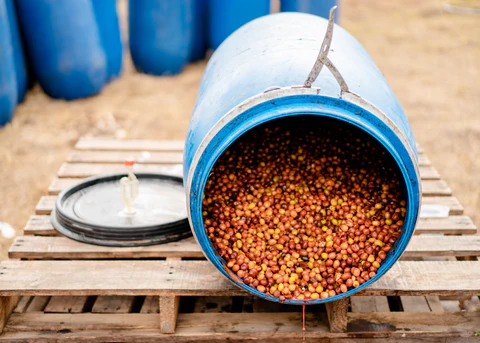

3 Responses